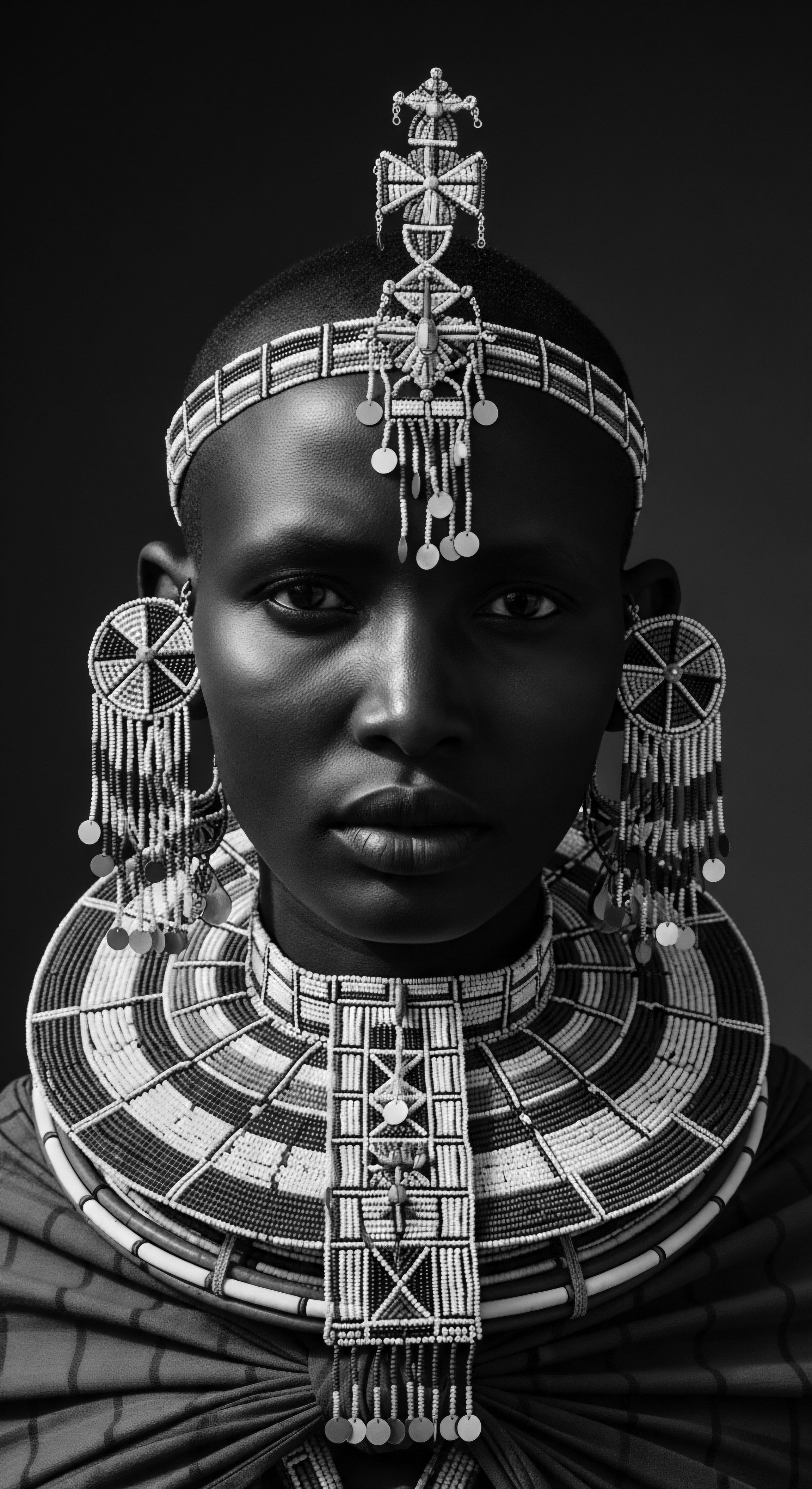
Fundamentals
The very notion of Fibroin, at its foundational level, speaks to the inherent strength and delicate grace found within nature’s own designs. It stands as a primary protein, the very scaffolding of silk, produced most famously by the humble silkworm, Bombyx Mori. When we consider its elemental composition, Fibroin is a fibrous protein, meticulously arranged in a semi-crystalline structure that grants silk its remarkable stiffness and tensile strength.
It is distinct from sericin, another protein found in raw silk, which acts as a protective, glue-like coating, binding the fibroin fibers together. This core definition of Fibroin as a robust, structural protein, a fundamental building block, resonates deeply when we contemplate the resilience of textured hair.
Think of it this way ❉ just as Fibroin provides the essential framework for a silk strand, the unique coiled and coily structures of textured hair offer a foundational strength, a heritage of enduring beauty that has withstood generations of external pressures and shifting perceptions. The inherent mechanical properties of Fibroin—its impressive tensile strength and resistance to breakage—offer a compelling parallel to the enduring nature of Black and mixed-race hair. These hair types, often characterized by their spiraling patterns, possess a unique structural integrity, allowing for a multitude of styles and expressions that have historically served as markers of identity, status, and resistance.
Fibroin, the core protein of silk, provides foundational strength and resilience, mirroring the enduring beauty and structural integrity inherent in textured hair.
When we speak of Fibroin, we are not merely discussing a scientific compound; we are acknowledging a natural marvel that has, through its very existence, inspired human ingenuity and informed ancestral practices of care. Its elemental explanation lies in its amino acid composition, primarily rich in glycine, alanine, and serine, which allow it to form stable, anti-parallel β-sheet crystallites. This molecular arrangement is what imparts the fiber its remarkable characteristics. For those new to the topic, understanding Fibroin is akin to appreciating the basic blueprint of a resilient natural fiber, a blueprint that finds its echo in the inherent qualities of hair that has been sculpted, braided, and adorned through centuries of cultural expression.
The meaning of Fibroin, therefore, extends beyond its chemical designation. It signifies a natural protein with inherent qualities that have been recognized and utilized across various cultures, albeit perhaps without the modern scientific terminology. Its presence in hair care products today is a contemporary re-discovery of an ancient wisdom, a recognition of its ability to fortify and protect, much like the traditional methods that sought to preserve the strength and beauty of textured strands.
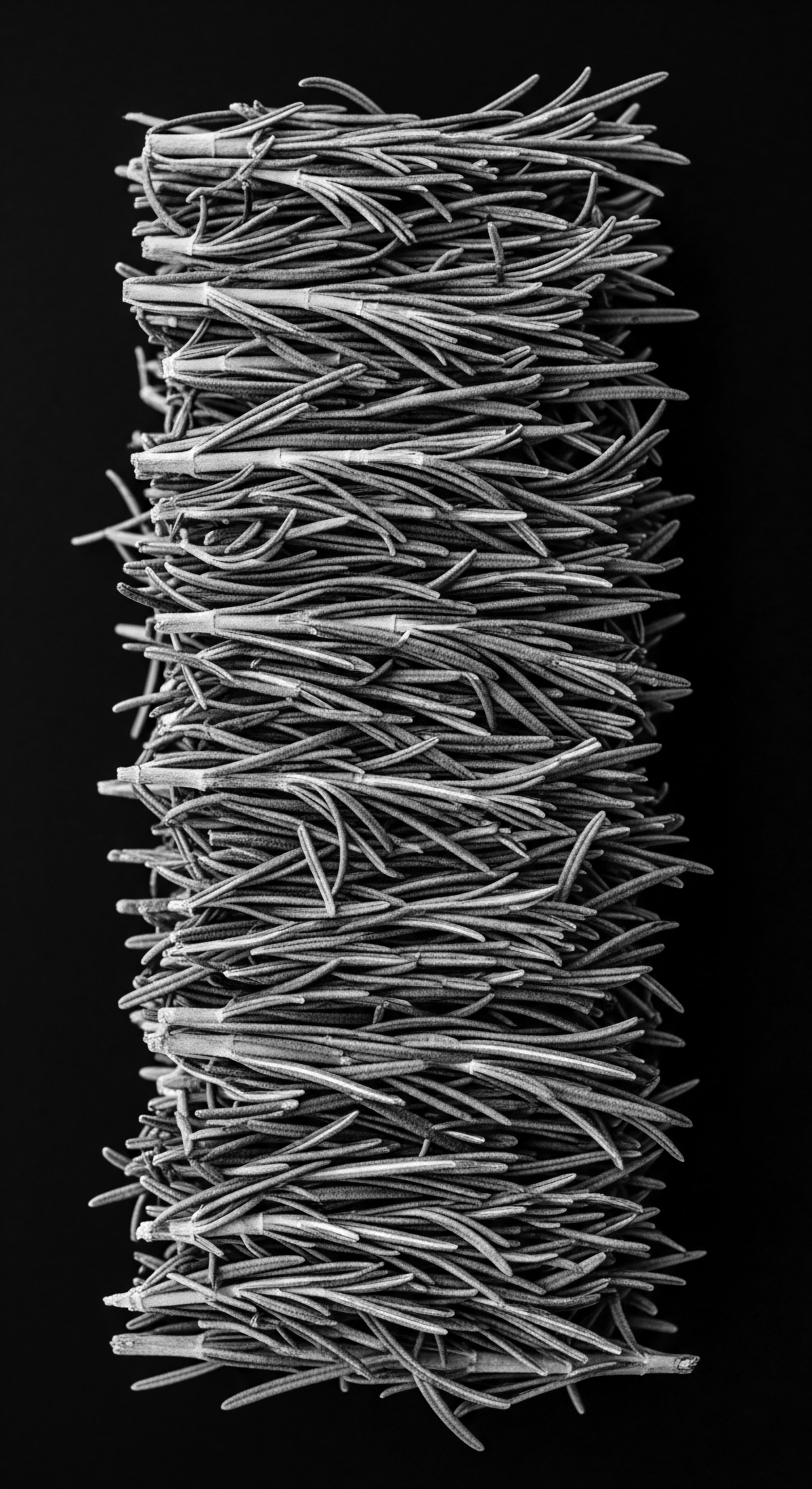
The Fiber’s Intrinsic Nature
- Composition ❉ Fibroin is a protein made up primarily of the amino acids glycine, alanine, and serine, arranged in a way that creates a strong, fibrous structure.
- Structure ❉ It forms stable β-sheet crystallites, which are highly organized and contribute to the fiber’s strength and inextensibility. This contrasts with keratin, the primary protein in human hair, which predominantly features α-helical structures.
- Properties ❉ Fibroin is known for its excellent mechanical properties, including high tensile strength and elasticity, which are crucial for the integrity of silk. These qualities are particularly beneficial when considering the needs of textured hair, which can be prone to breakage if not properly cared for.
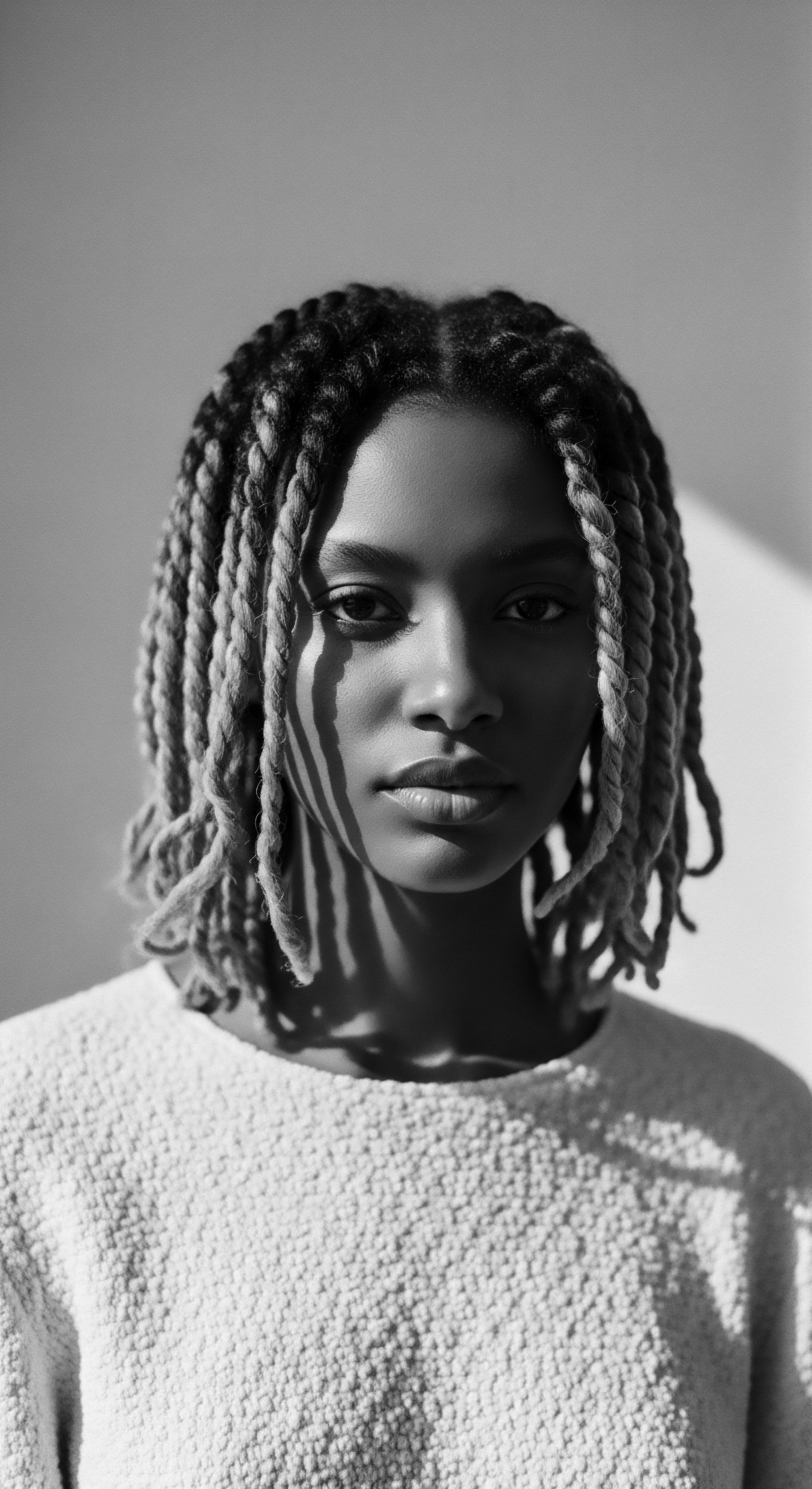
Intermediate
Stepping beyond the fundamental identification, the intermediate comprehension of Fibroin deepens into its functional significance and historical interplay with human practices, particularly within the rich tapestry of textured hair heritage. Fibroin is not simply a protein; it is a testament to nature’s capacity for creating robust, yet supple, structures. Its designation as a key component in silk has long been recognized for its capacity to impart smoothness, strength, and a unique luster to fibers. This recognition, though perhaps not articulated with precise scientific terms in antiquity, informed generations of care practices.
The historical connection of silk, and by extension Fibroin, to hair care is compelling, especially when considering the ancestral wisdom prevalent in Black and mixed-race communities. Before the advent of modern laboratories and chemical formulations, people relied on natural resources and keen observation. The properties of silk, such as its smooth surface and moisture-retaining capabilities, would have been intuitively understood.
Indeed, the practice of wrapping hair in silk or satin fabrics for protection and moisture retention has a long and storied history in Black hair culture, a tradition that continues to this day. This practice, often passed down through matriarchal lines, speaks to an inherent understanding of how certain materials could safeguard delicate hair textures, preventing tangles, reducing friction, and preserving moisture.
The historical use of silk in textured hair care traditions reveals an ancestral understanding of Fibroin’s benefits for moisture retention and protection, long before scientific elucidation.
The explanation of Fibroin’s impact on hair can be seen through its affinity for keratin, the primary protein in human hair. While hair is predominantly composed of keratin, the introduction of Fibroin, particularly in its hydrolyzed form, can offer a complementary strengthening and conditioning effect. Hydrolyzed silk protein, meaning silk broken down into smaller, water-soluble molecules, can penetrate the hair shaft, providing deep nourishment.
This process enhances the hair’s elasticity, making it more resilient against breakage and improving its overall softness and manageability. This scientific understanding provides a modern lens through which to appreciate the efficacy of ancestral practices that intuitively leveraged materials with similar protective qualities.
Consider the profound significance of hair in many African and diasporic cultures, where it has historically served as a powerful symbol of identity, social status, and spiritual connection. The meticulous care given to hair was not merely aesthetic; it was a ritual, a connection to lineage and community. The use of materials like silk, even if not explicitly understood as “Fibroin” in a scientific sense, was part of a broader cultural understanding of preserving and honoring this vital aspect of self. The interpretation of Fibroin in this context moves beyond a simple chemical definition to encompass its role in sustaining cultural practices and contributing to the well-being of textured hair through generations.
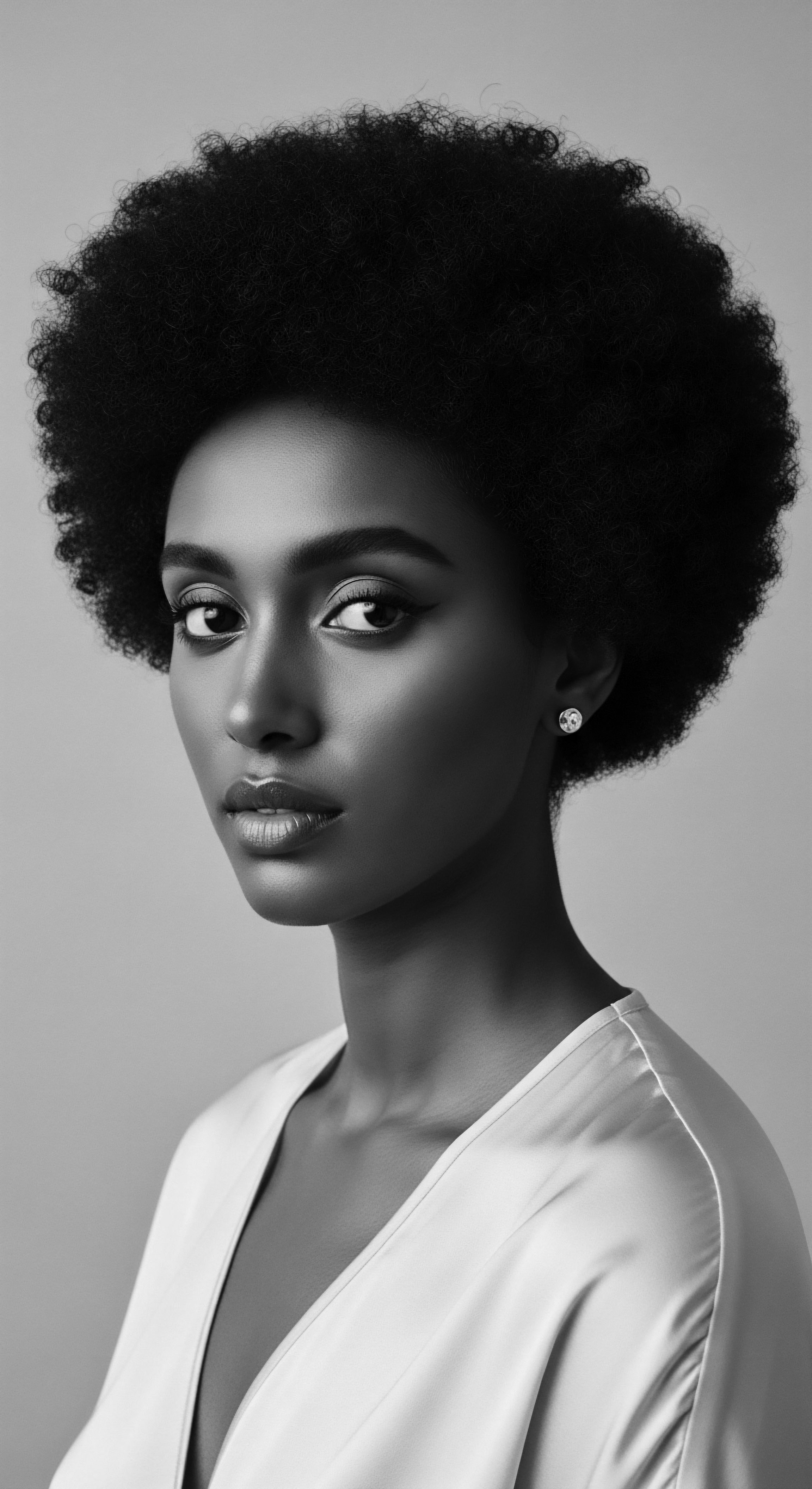
Ancestral Echoes in Modern Understanding
The wisdom of ancestral hair care, while not always articulated in scientific terms, often aligns with modern understanding of Fibroin’s benefits. Traditional methods focused on maintaining moisture, minimizing manipulation, and using natural emollients. The application of silk, in various forms, served these very purposes.
- Protective Styling and Materials ❉ Historically, practices like hair wrapping with silk or satin were prevalent in African American communities to protect delicate strands, reduce friction, and retain moisture. This aligns with Fibroin’s ability to create a smooth surface and prevent moisture loss.
- Moisture Retention ❉ Silk’s hygroscopic properties—its ability to attract and hold water—would have been observed and utilized. This natural capacity directly contributes to the hydration of textured hair, which is often prone to dryness due to its unique structure.
- Enhanced Resilience ❉ The strengthening attributes of Fibroin, particularly its capacity to improve elasticity and reduce breakage, offer a scientific basis for the long-observed benefits of silk on hair, helping to preserve the integrity of curls and coils.
The integration of silk into traditional hair care, from protective head coverings to incorporating silk fibers into styling, demonstrates a deep, inherited knowledge. For example, in many West African communities, intricate braiding patterns were not only aesthetic expressions but also practical solutions for hair management and communication. The use of smooth materials, like silk, would have been a natural extension of these practices, aiming to reduce damage during styling and sleeping.
| Traditional Practice (Pre-19th Century) Wrapping hair in silk or smooth cloths before sleep. |
| Modern Application/Scientific Link to Fibroin Silk pillowcases and bonnets reduce friction, minimizing mechanical damage and preserving hair's natural oils and moisture, aligning with Fibroin's smooth, low-friction surface. |
| Traditional Practice (Pre-19th Century) Using natural oils and butters to seal moisture into hair. |
| Modern Application/Scientific Link to Fibroin Hydrolyzed Fibroin in modern conditioners enhances moisture retention by forming a protective layer on the hair shaft, complementing the work of traditional emollients. |
| Traditional Practice (Pre-19th Century) Protective styles like braids and twists to minimize manipulation. |
| Modern Application/Scientific Link to Fibroin Fibroin's strengthening properties support the integrity of hair in protective styles, reducing breakage and enhancing overall resilience. |
| Traditional Practice (Pre-19th Century) These interwoven practices highlight the continuous thread of care for textured hair, from ancestral wisdom to contemporary scientific understanding of Fibroin. |
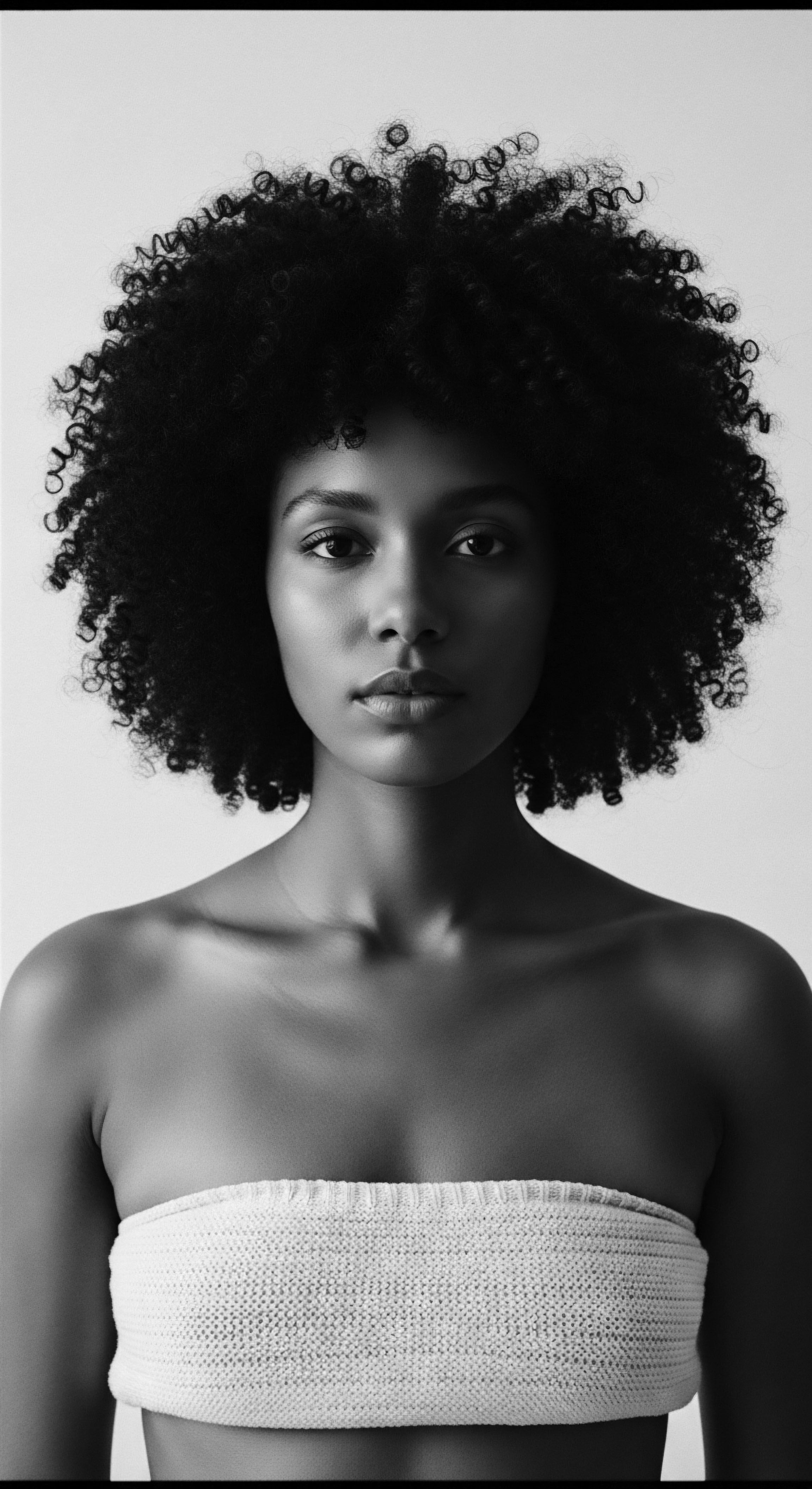
Academic
The academic understanding of Fibroin delves into its precise molecular architecture, its biophysical properties, and its profound implications for biomaterial science, particularly as it intersects with the unique characteristics of textured hair. At its core, Fibroin is a fibrous protein, predominantly composed of the amino acids glycine, alanine, and serine, arranged in repetitive sequences that facilitate the formation of highly stable anti-parallel β-sheet structures. This specific secondary structure confers exceptional mechanical strength, insolubility, and resistance to degradation, qualities that have made silk a material of enduring fascination and utility. The meaning of Fibroin, from an academic vantage, is therefore rooted in its remarkable structural integrity and its capacity to form resilient fibers, a property that holds significant implications for the care and understanding of human hair, especially the structurally diverse forms of textured hair.
While human hair is primarily composed of α-keratin, a protein characterized by its α-helical coiled-coil structures, Fibroin’s β-sheet dominance presents a fascinating comparative study in protein mechanics and material science. The distinction lies in their inherent extensibility and elasticity; α-keratin can stretch and recoil, while Fibroin exhibits minimal extensibility but possesses superior resistance to breaking. This difference in mechanical properties, however, does not preclude their synergistic application in hair care.
Indeed, hydrolyzed Fibroin, through enzymatic or chemical processing, yields smaller peptides and amino acids that can penetrate the hair shaft, interacting with keratin to enhance its strength, elasticity, and moisture retention. This interaction is not merely superficial; it can contribute to the internal architecture of the hair, offering a more robust and resilient strand.
The academic delineation of Fibroin’s role in hair science extends to its ability to form a protective layer on the hair fiber, which is particularly advantageous for textured hair types. These hair types, due to their unique curl patterns and often higher porosity, are susceptible to moisture loss and mechanical damage. Fibroin’s film-forming properties can mitigate these challenges by sealing the cuticle, thereby reducing frizz and improving smoothness.
This phenomenon, observed in contemporary formulations, finds an intriguing historical parallel in the long-standing use of silk head wraps and bonnets in Black and mixed-race communities. These traditional practices, born from centuries of empirical observation, effectively leveraged the low-friction and moisture-retaining attributes of silk, intuitively applying principles that modern science now elucidates through the lens of Fibroin’s properties.
Consider the profound cultural significance of hair within the African diaspora, where hair has consistently served as a powerful medium for expressing identity, resilience, and historical memory. The maintenance and styling of textured hair have been more than mere cosmetic acts; they have been acts of resistance, self-affirmation, and communal bonding, particularly in the face of systemic discrimination rooted in Eurocentric beauty standards. The CROWN Act, passed in several U.S.
states, prohibiting race-based hair discrimination, stands as a modern testament to the enduring struggle for hair autonomy and the recognition of textured hair as a symbol of cultural pride. This legislative movement underscores the deep-seated societal implications of hair, moving beyond superficial aesthetics to address fundamental issues of equity and cultural respect.
One might argue that the ancestral application of silk in hair care, long before the precise scientific explanation of Fibroin was available, represents a sophisticated form of ethnobotanical and material science knowledge. For instance, while explicit data on ancient African use of silkworm Fibroin for hair is limited, the widespread historical use of other natural fibers and plant-based emollients for hair care across African communities is well-documented. Shea butter, derived from the African shea tree, has been used for centuries for its moisturizing and protective properties, and in Namibia, the Himba tribe uses a mixture of clay and cow fat for hair protection. In Nigeria, traditional plant cosmetics include ingredients like onion oil for dandruff and hair breakage, and various plants for hair growth.
These practices, though varied in their specific components, share a common intention ❉ to fortify the hair fiber, retain moisture, and promote scalp health. The seamless integration of silk (and by extension, Fibroin) into these broader traditions of care speaks to an inherent, empirical understanding of its benefits.
The academic exploration of Fibroin reveals its unique β-sheet structure, offering a scientific lens through which to understand its historical benefits for textured hair, particularly its role in moisture retention and strengthening, a legacy echoed in ancestral hair care rituals.
The interpretation of Fibroin within Roothea’s living library extends beyond a simple chemical definition to encompass its deep cultural resonance. It serves as a bridge between ancestral wisdom and contemporary scientific understanding, allowing us to appreciate how traditional practices, often dismissed as anecdotal, find validation in modern biochemical analysis. The enduring presence of silk in textured hair care, from the protective wraps of the past to the hydrolyzed protein in today’s formulations, is a testament to the timeless value of its core protein, Fibroin. This continuity highlights a profound legacy of care, adaptability, and resilience that characterizes the heritage of Black and mixed-race hair.
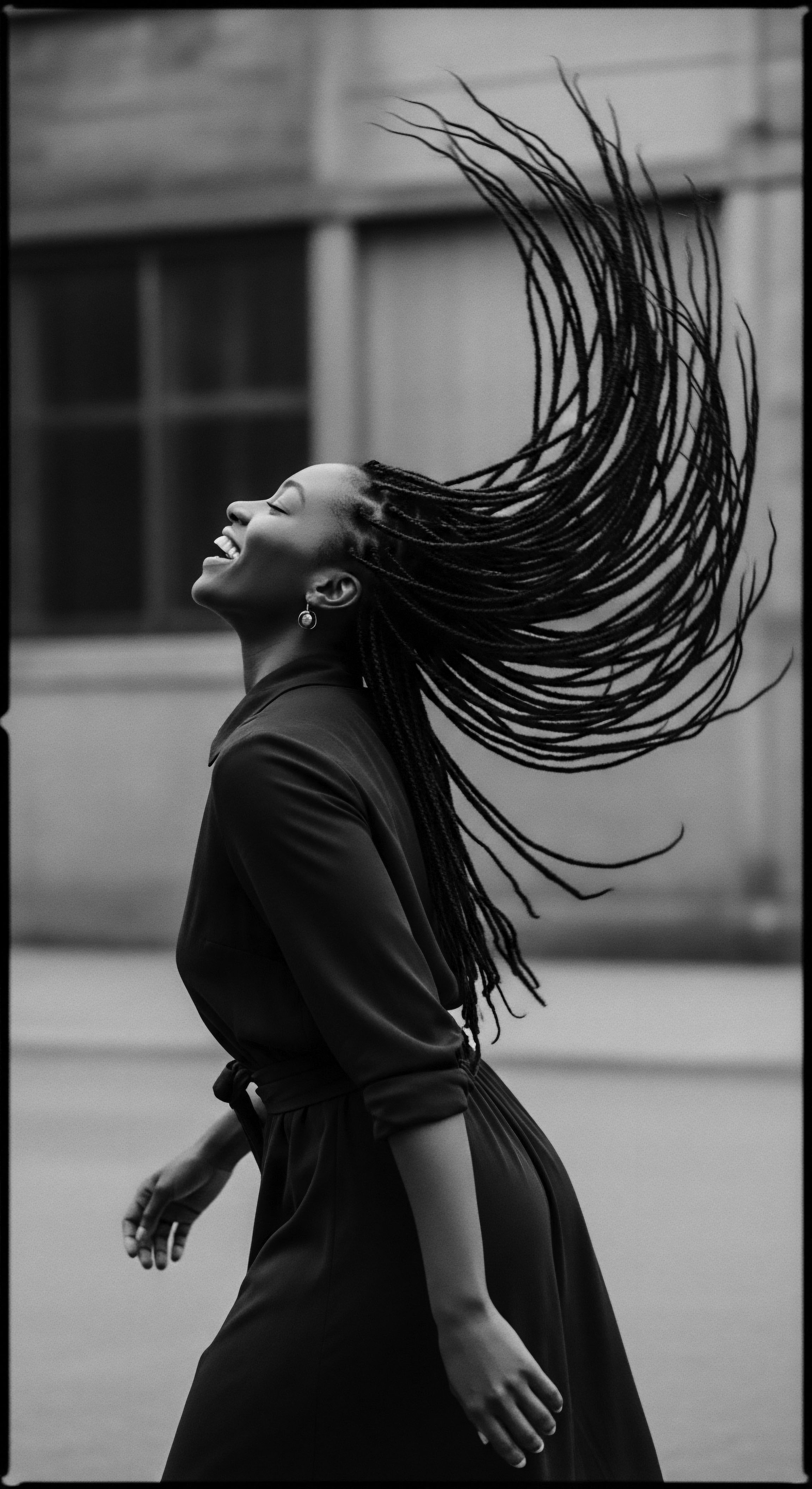
Fibroin’s Molecular Delineation and Hair Synergy
The elucidation of Fibroin’s molecular characteristics reveals a complex protein structure that contributes to its remarkable properties.
- Primary Structure ❉ The primary structure of Fibroin is characterized by highly repetitive sequences of amino acids, predominantly glycine, alanine, and serine. This repeating pattern is crucial for the formation of its robust secondary structures.
- Secondary Structure ❉ Fibroin primarily adopts a β-sheet conformation, where polypeptide chains are arranged in anti-parallel pleated sheets. These sheets are stabilized by extensive hydrogen bonding, contributing significantly to the protein’s mechanical strength and stability.
- Hierarchical Organization ❉ Beyond its molecular structure, Fibroin exhibits a hierarchical organization, from individual protein chains to macroscopic fibers. This multi-scale arrangement is what grants silk its exceptional mechanical properties, including high tensile strength and elasticity.
The significance of Fibroin in hair care is further amplified by its interaction with keratin.
Hydrolyzed Fibroin, with its smaller molecular weight, can effectively penetrate the hair cuticle, delivering its beneficial properties directly to the hair shaft. Once inside, it can interact with the keratin structure, contributing to improved hair strength, elasticity, and moisture balance. This process helps to mitigate common challenges faced by textured hair, such as dryness, breakage, and frizz.
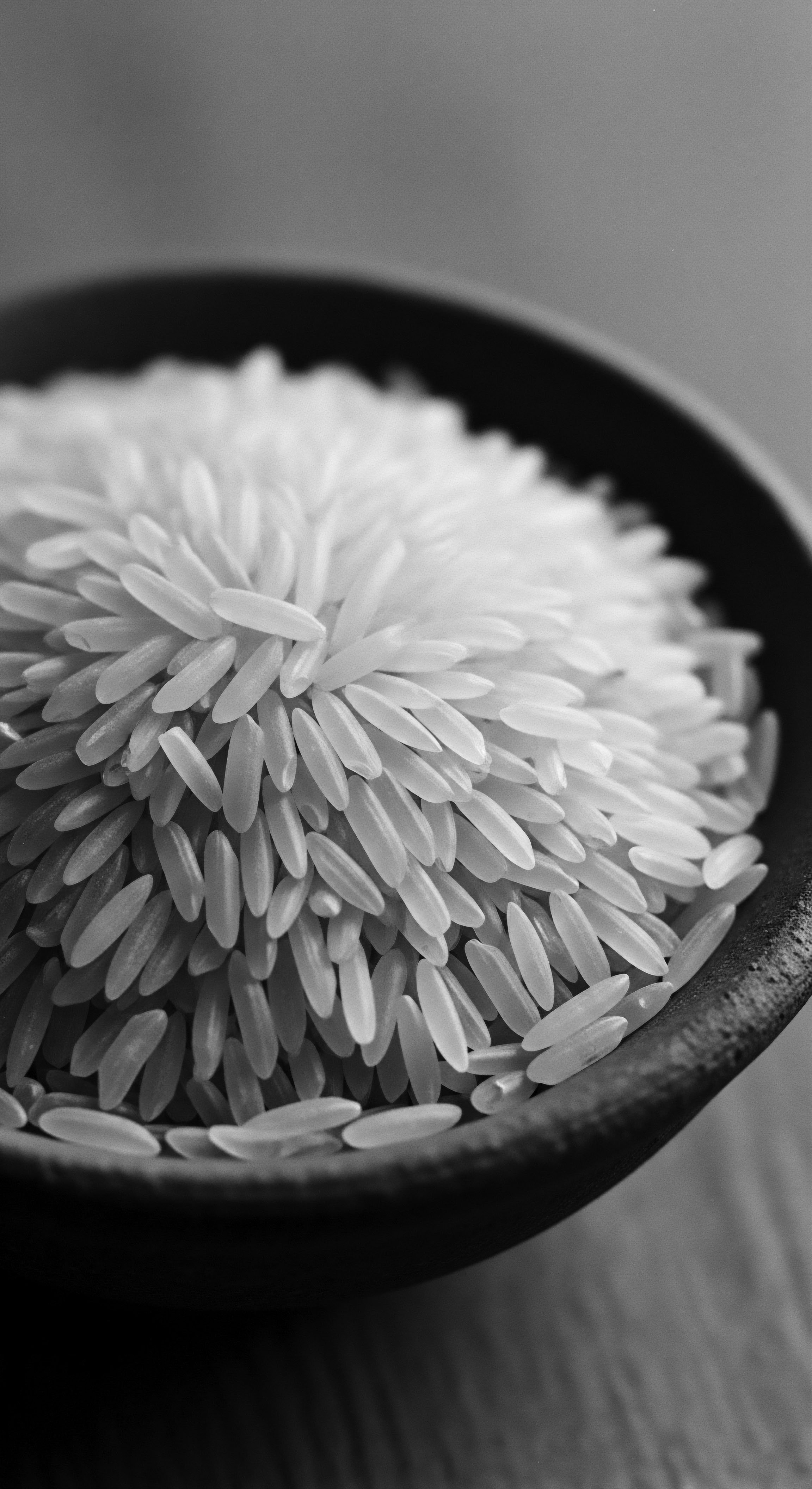
Case Study ❉ The Silk Press and Fibroin’s Unspoken Role
A powerful historical example illuminating Fibroin’s connection to textured hair heritage, particularly within Black hair experiences, is the evolution of the “silk press.” This hair straightening technique, popular in Black communities for decades, achieves a sleek, straight look using heat tools and minimal product, without chemical relaxers. While the term “silk” in “silk press” traditionally refers to the smooth, lustrous finish achieved, the historical preference for silk fabrics in hair care, particularly for protective purposes, suggests an underlying, perhaps intuitive, recognition of silk’s beneficial properties for textured hair. African American women have long used silk or satin scarves and bonnets to protect their hair, preserve styles, and retain moisture, especially during sleep. This widespread practice, dating back centuries, implicitly leverages the low-friction surface and moisture-retaining qualities inherent to silk, which are directly attributable to the Fibroin protein.
During the era of slavery and its aftermath, the ability to straighten textured hair was often a matter of survival, linked to assimilation and perceived respectability in a society that upheld Eurocentric beauty standards. The silk press emerged as a less damaging alternative to harsh chemical relaxers, offering a temporary alteration of texture while minimizing the chemical assault on the hair. The consistent use of silk in conjunction with these styling methods, from protective wraps to the very name of the technique, speaks to an enduring cultural understanding of silk’s protective and conditioning benefits. This is not merely a linguistic coincidence; it reflects a deep, inherited knowledge within Black communities about materials that could support the health and appearance of their unique hair textures, even when adapting to oppressive beauty norms.
The “silk” in “silk press” thus carries a dual meaning ❉ the desired smooth finish and the historically revered material that helped achieve and maintain hair health. This connection between the material, the practice, and the cultural context highlights Fibroin’s unspoken but significant role in the historical and ongoing narrative of Black hair care.
| Hair Challenge for Textured Hair Dryness and Moisture Loss |
| Fibroin's Mechanism of Benefit Hydrolyzed Fibroin forms a protective film, enhancing moisture retention and reducing water evaporation from the hair shaft. |
| Ancestral Parallel Use of silk head wraps and bonnets to seal in moisture overnight. |
| Hair Challenge for Textured Hair Breakage and Mechanical Damage |
| Fibroin's Mechanism of Benefit Fibroin strengthens hair by improving elasticity and reducing friction between strands. |
| Ancestral Parallel Gentle detangling practices and protective styling to minimize stress on hair. |
| Hair Challenge for Textured Hair Frizz and Roughness |
| Fibroin's Mechanism of Benefit Fibroin's smoothing properties contribute to a more aligned cuticle, resulting in reduced frizz and increased softness. |
| Ancestral Parallel Application of natural oils and butters to smooth the hair cuticle and add luster. |
| Hair Challenge for Textured Hair The scientific understanding of Fibroin affirms long-held ancestral practices, demonstrating a continuum of care for textured hair across generations. |
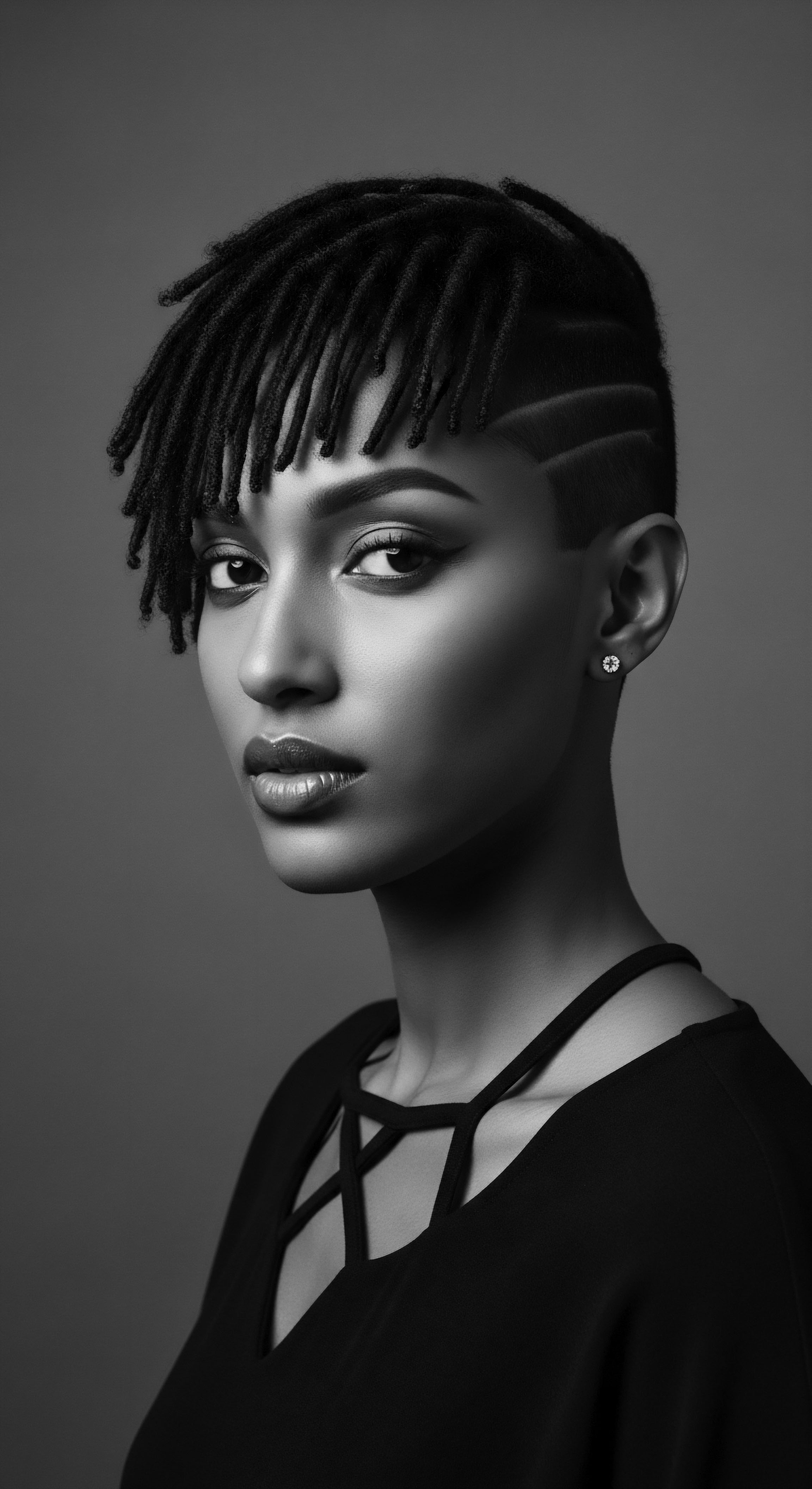
Reflection on the Heritage of Fibroin
As we close this exploration of Fibroin, from its elemental biological definition to its profound significance within the rich tapestry of textured hair heritage, a deeper appreciation emerges. Fibroin is not merely a protein; it stands as a silent testament to the enduring wisdom of ancestral practices, a natural wonder whose inherent qualities were intuitively understood and harnessed long before the advent of modern scientific inquiry. The journey of textured hair, particularly within Black and mixed-race communities, has always been one of resilience, creativity, and profound cultural expression. Hair, in these contexts, transcends the purely aesthetic, becoming a powerful symbol of identity, resistance, and connection to lineage.
The smooth, protective qualities of silk, underpinned by the Fibroin protein, found their way into daily rituals and ceremonial practices, offering a tangible means of care and preservation. These were not random acts but rather deliberate choices rooted in a deep understanding of hair’s delicate yet powerful nature. The continuous thread from ancient silk wraps to contemporary hydrolyzed Fibroin treatments speaks to an unbroken chain of knowledge, a dialogue between past and present that informs our approach to textured hair care. It reminds us that innovation often finds its most potent inspiration in the echoes of ancestral wisdom.
Fibroin embodies a continuous narrative of care, linking ancient wisdom to modern understanding, a testament to the enduring spirit of textured hair heritage.
In the spirit of Roothea’s ‘living library,’ the story of Fibroin becomes a vibrant chapter, celebrating the innate beauty and strength of textured hair. It compels us to recognize the deep cultural meaning embedded in every curl, coil, and wave, and to honor the historical journey of care that has shaped these crowning glories. This understanding allows us to approach hair wellness not just as a scientific endeavor, but as a soulful practice, deeply connected to identity, community, and the boundless legacy of those who came before us.
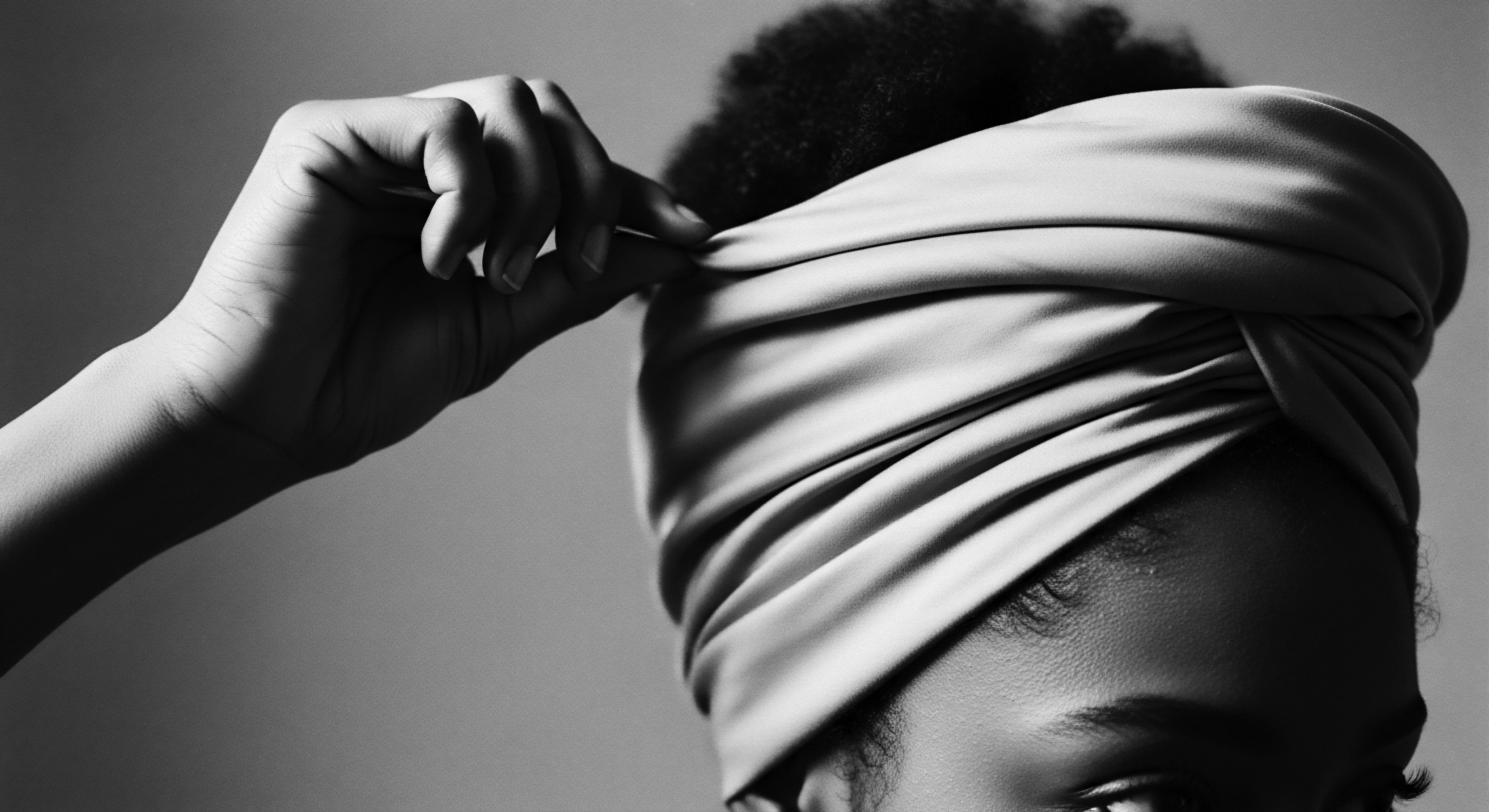
References
- Byrd, A. & Tharps, L. L. (2001). Hair Story ❉ Untangling the Roots of Black Hair in America. St. Martin’s Press.
- Gopinath, K. & Roy, A. (2017). Silk Fibroin Biomaterials ❉ Structure, Properties, and Applications. Springer.
- Gommersall, A. (2020). The Cultural History of Hair. Bloomsbury Academic.
- Johnson, D. W. (2018). The African-American Hair and Skin Care Book ❉ A History and Practical Guide. University Press of Mississippi.
- Khanna, A. (2019). Ethnobotany of Hair Care ❉ Traditional Practices and Modern Applications. CRC Press.
- Kumar, S. & Singh, R. (2016). Natural Fibers ❉ Properties and Applications. Woodhead Publishing.
- Minoura, N. et al. (2001). Silk Fibroin ❉ A Versatile Biomaterial. Wiley-VCH.
- Myers, N. (2013). Hair ❉ A Cultural History. University of Chicago Press.
- Nishikawa, K. & Takamura, H. (2007). Silk Science and Technology. CRC Press.
- Patterson, J. (2008). Encyclopedia of Hair ❉ A Cultural History. Greenwood Press.
- Perry, M. L. (2019). The History of Black Hair ❉ A Cultural Exploration. Routledge.
- Saha, S. & Agrawal, A. (2017). Silk Fibroin ❉ From Biosynthesis to Biomedical Applications. Springer.
